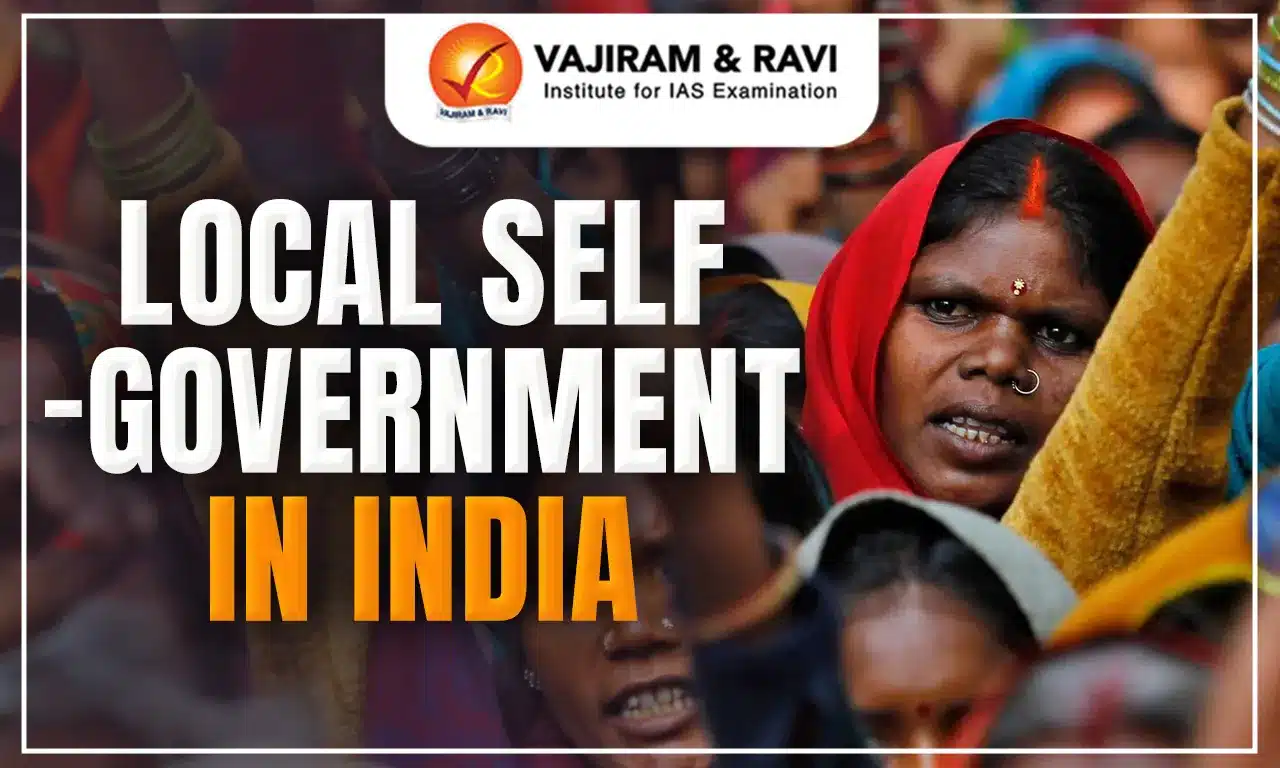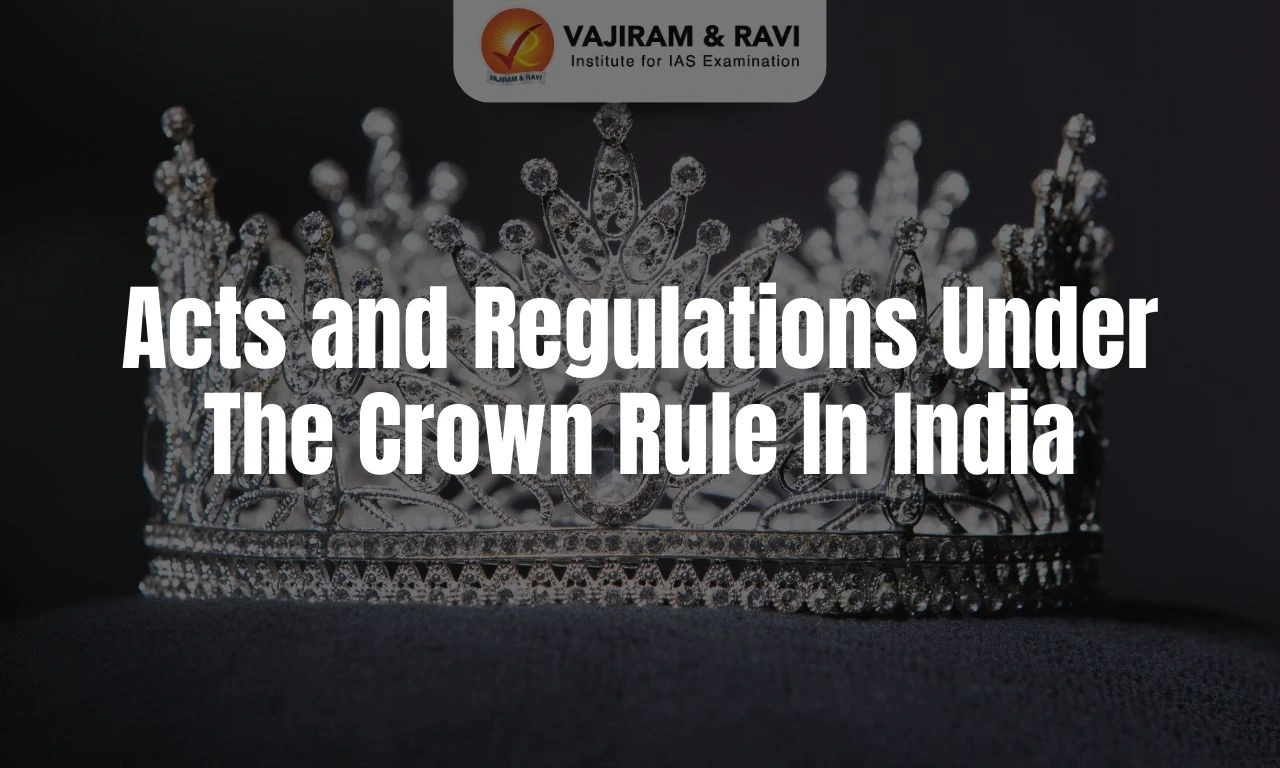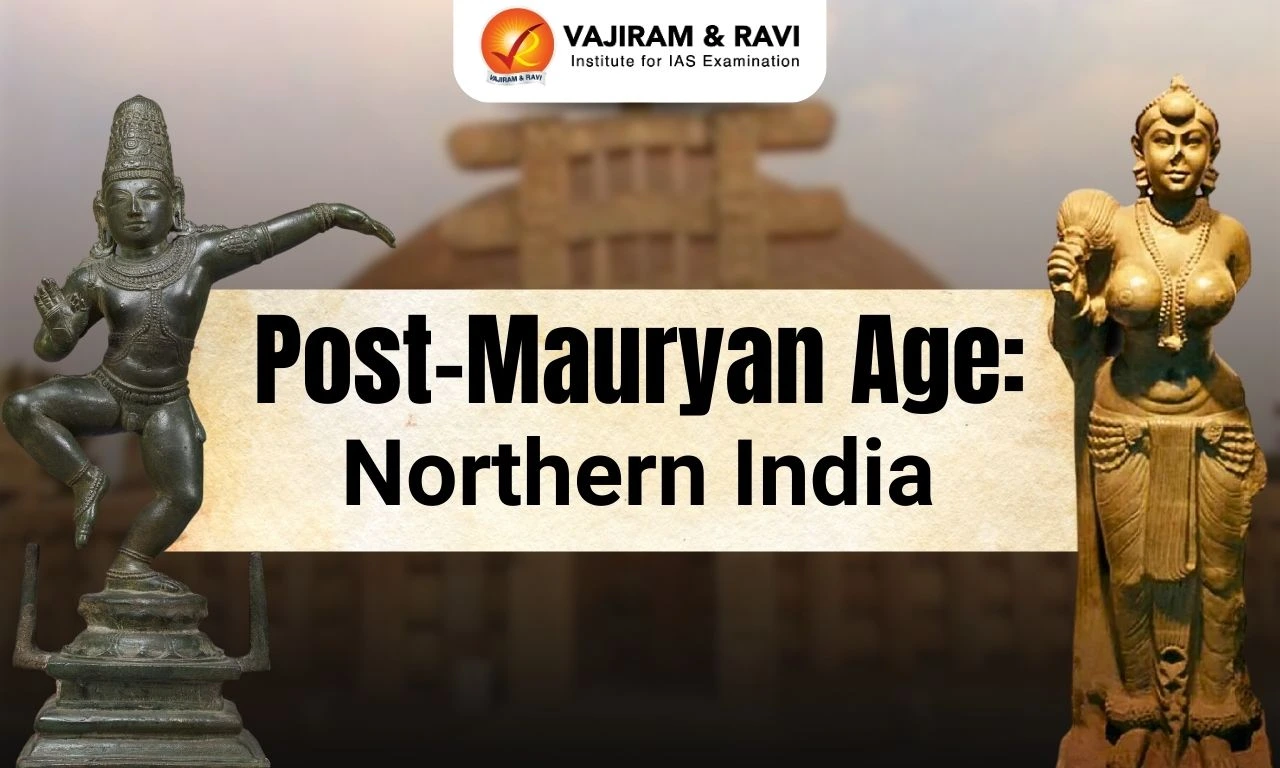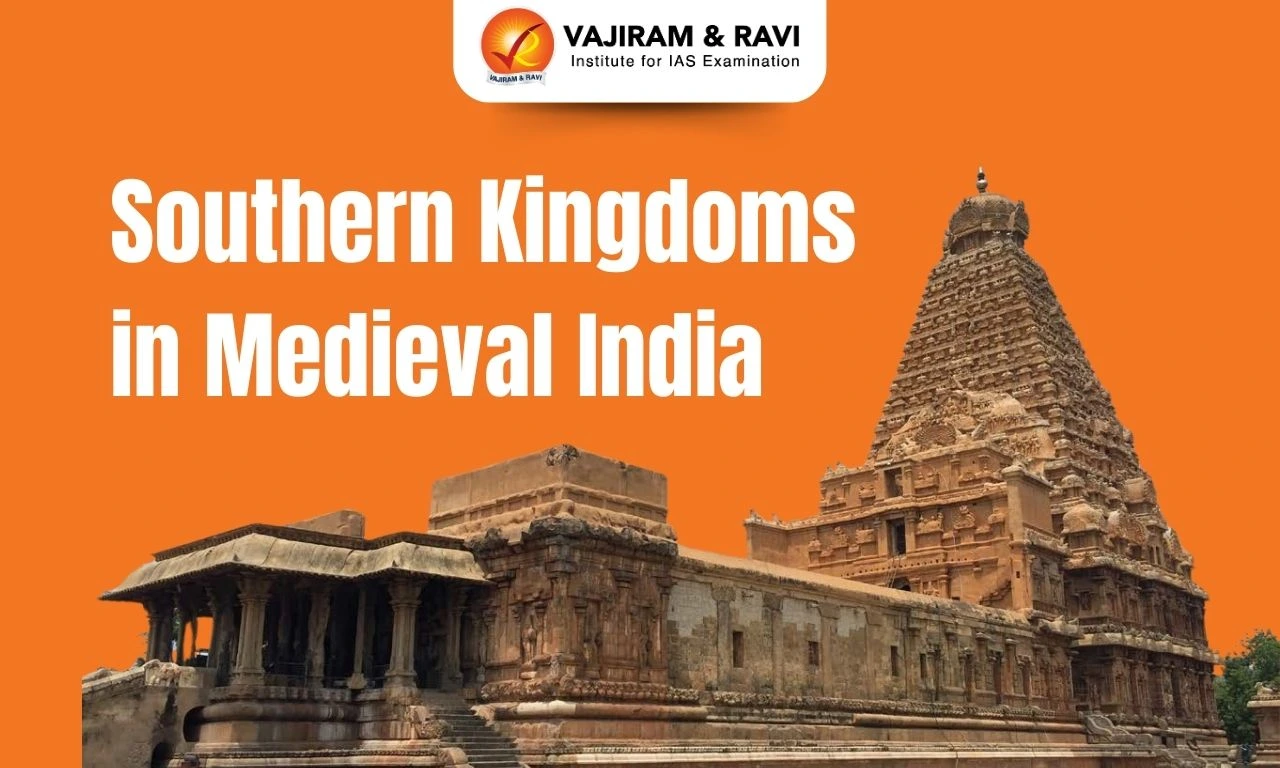What is the historical background and evolution of Local Self-Governments in India?
Pre-Independence Period
- Local Self-Governments in India have a long history dating back to ancient times. During pre-independence, these institutions were known as "panchayats" and were primarily responsible for maintaining law and order in rural areas.
- Local Self-Governments were responsible for resolving disputes and providing a forum for village-level decision-making. Panchayats were often headed by a village headman chosen by the village elders.
- In the 19th and early 20th centuries, British colonial rule introduced modern forms of local self-government in India, which were based on the Panchayati Raj system. These institutions have continued to evolve and play a vital role in the governance of rural areas in modern India.
Mahatma Gandhi’s view on Local Self-Governments
- Decentralized Form: Mahatma Gandhi believed that Local Self-Governments were the backbone of India's democracy. He believed that these decentralized local government bodies have the power to make decisions at the community level.
- Self Rule: Gandhi believed that Local Self-Governments were an essential part of village self-governance and that they should be given more authority and resources to carry out their duties.
- Participative Governance: He also believed that Local Self-Governments were an essential platform for people to participate in the democratic process and to have a say in the decisions that affected their lives.
- Gandhi believed that Panchayati Raj Institutions(PRIs) should be accountable to the people they served and that they should be transparent and responsive in their decision-making processes.
Post-Independence Period
| 1951 | Community Development Program launched to promote rural development |
| 1953 | First Panchayati Raj elections held in Rajasthan |
| 1959 | State of Rajasthan passes Panchayati Raj Act, providing legal framework for PRIs |
| 1962 | Central government establishes Ministry of Community Development and Cooperation |
| 1992 | National Panchayati Raj Day established to recognize the contributions of PRIs |
| 1993 | Central government passes 73rd Amendment to the Constitution, providing legal basis for PRIs |
| 1996 | Panchayati Raj Extension to Scheduled Areas Act (PESA) passed, giving tribal areas greater autonomy |
| 2000 | National Gram Swaraj Abhiyan launched to promote decentralized governance and strengthen PRIs |
| 2011 | Government of India launches National Rural Livelihoods Mission to empower women and marginalized groups through PRIs |
Some important committees, which recommended Local Self-Governments, are given below:
- Balwant Rai Mehta Committee (1957): This committee recommended the establishment of PRIs at the village, intermediate, and district levels. It also recommended that PRIs be given financial resources and powers to decide on local issues.
- Ashok Mehta Committee (1977): This committee recommended that PRIs be given more powers and resources and that they be made responsible for planning and implementing development projects at the local level.
- G.V.K. Rao Committee (1985): This committee recommended that PRIs be given greater autonomy and that they be made accountable to the people they serve. It also suggested that PRIs be given the power to levy taxes and fees.
- L.M. Singhvi Committee (1986): The L.M. Singhvi committee recommended the need for constitutional recognition and legal framework for Panchayat Raj Institution and urban local bodies to strengthen the local self-governance in India.
- P.K. Thungon Committee (1989): It recommended constitutional recognition for the local government bodies.
- Second Administrative Reforms Commission (2007): The principle of Subsidiary should be upheld, and there should be a clear delineation of functions for each level of local government.
What is the existing structure of Local Self-Governments in India?
India has a federal system of government in which powers are divided between the central government and the states and union territories. The Constitution of India defines the structure of local self-government in the country through the 73rd and 74th Constitutional Amendments, which were passed in 1992. These amendments created two new governance structures: the Panchayats (for rural areas) and the Municipalities (for urban areas).
The Panchayati Raj system was first established in India in the 1950s, but it was only with the 73rd Constitutional Amendment Act of 1992 that it was given constitutional recognition and a formal structure. The Act defines the Panchayati Raj system as a "three-tier system" consisting of:
- Village Panchayats: The lowest level of local government, responsible for village-level administration and development.
- Intermediate Panchayats: Intermediate level of local government, typically responsible for a group of villages.
- District Panchayats: The highest level of rural local government, responsible for district-level administration and development.
Urban Local Bodies(ULBs)
Urban Local Bodies (ULBs) are the grassroots-level democratic bodies that are responsible for the administration and development of urban areas in India. The 74th Constitutional Amendment Act of 1992 gave constitutional recognition to the ULBs and established a formal structure for them. Some ULBs in India are given below:
- Municipal corporation: Municipal Corporations, also known as Nagar Nigams, are the highest level of Urban Local Bodies (ULBs) in India. The 74th Constitutional Amendment Act of 1992 gave constitutional recognition to Municipal Corporations and established a formal structure for them.
- Municipality: A Municipality is a form of Urban Local Body (ULB) in India, responsible for the administration and development of urban areas. They are typically divided into two categories: Municipal Councils and Nagar Panchayats. Municipal Councils govern smaller urban areas, while Nagar Panchayats are for areas in transition from rural to urban.
- Notified area committee: Notified Area Committees (NACs) are established in rapidly expanding towns or cities that have not yet reached the population required to become a municipality. They are designated as NACs by the state government through an official gazette notification. NACs are made up entirely of members nominated by the state government.
- Town area committee: Town Area Committees (TACs) are established to administer small towns. They are created by a specific act passed by the state legislature. It could be wholly elected, wholly nominated or a combination of both parties elected and nominated.
- Cantonment board: The Cantonment Board is an organization established to administer and manage the civilian population living in cantonment areas. It operates in accordance with the provisions of the Cantonment Act of 2006 and falls under the jurisdiction of the Union Defence Ministry.
15th Finance Commission recommendations for strengthening the local government finances
- Comparison to 14th FC: The 15th FC has included all levels of rural panchayats and also the panchayats in scheduled areas in contrast to the 14th Finance Commission, which considered only village panchayats for grants and excluded scheduled area village panchayats.
- Grants to local bodies: The Finance Commission has recommended the grant of Rs 4.36 lakh crore from the central divisive tax pool to local governments, both rural and urban, for 2021-26.
- Setting up State Finance Commission: No grants will be released to local bodies of a state after March 2024 if the state does not constitute State Finance Commission and act upon its recommendations by then.
- Grant Criteria: Grants to local bodies (other than health grants) will be distributed among states based on population and area, with 90% and 10% weightage, respectively.
Last updated on December, 2025
→ Check out the latest UPSC Syllabus 2026 here.
→ Join Vajiram & Ravi’s Interview Guidance Programme for expert help to crack your final UPSC stage.
→ UPSC Mains Result 2025 is now out.
→ UPSC Notification 2026 is scheduled to be released on January 14, 2026.
→ UPSC Calendar 2026 is released on 15th May, 2025.
→ The UPSC Vacancy 2025 were released 1129, out of which 979 were for UPSC CSE and remaining 150 are for UPSC IFoS.
→ UPSC Prelims 2026 will be conducted on 24th May, 2026 & UPSC Mains 2026 will be conducted on 21st August 2026.
→ The UPSC Selection Process is of 3 stages-Prelims, Mains and Interview.
→ UPSC Result 2024 is released with latest UPSC Marksheet 2024. Check Now!
→ UPSC Prelims Result 2025 is out now for the CSE held on 25 May 2025.
→ UPSC Toppers List 2024 is released now. Shakti Dubey is UPSC AIR 1 2024 Topper.
→ UPSC Prelims Question Paper 2025 and Unofficial Prelims Answer Key 2025 are available now.
→ UPSC Mains Question Paper 2025 is out for Essay, GS 1, 2, 3 & GS 4.
→ UPSC Mains Indian Language Question Paper 2025 is now out.
→ UPSC Mains Optional Question Paper 2025 is now out.
→ Also check Best IAS Coaching in Delhi
Local Self-Government in India FAQs
Q1. What are the foundational principles of Local self-government?+
Q2. Who was the father of local self-government in India?+
Q3. What are the limitations of local self-government in India?+

















